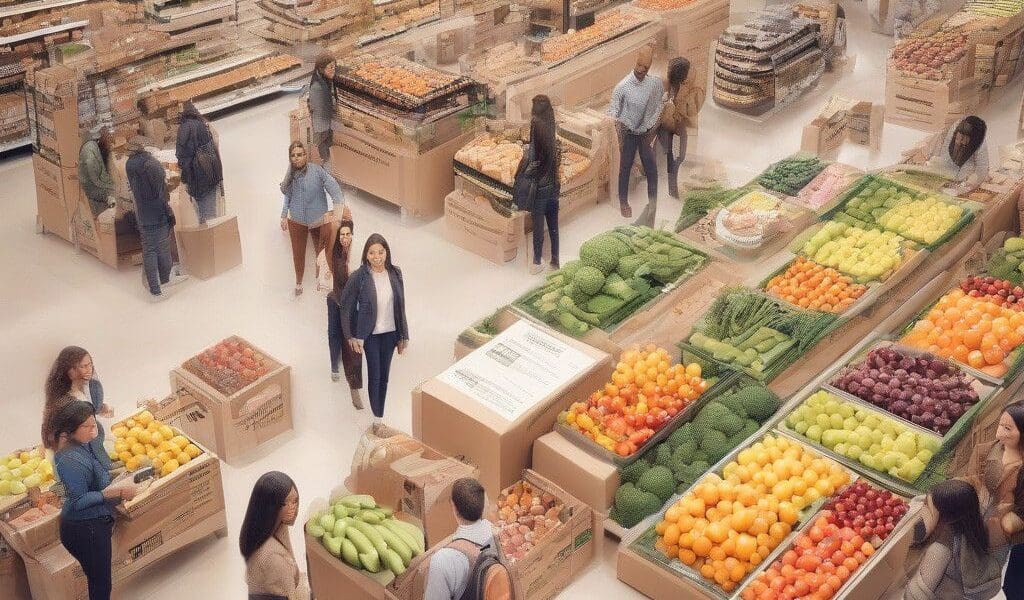In recent months, Amazon has made remarkable strides in transforming its sales events into phenomenon-driven retail experiences. The recent Prime Big Deal Days, held on October 8 and 9, was marked as the largest October shopping event on record, demonstrating a significant increase in sales compared to previous years. This event follows the record-breaking performance of Prime Days in July when shoppers spent an astounding $14.2 billion. As we approach the pinnacle of the shopping season with Black Friday and Cyber Monday, the question arises: how does grocery fit into Amazon’s strategic shopping framework?
To unravel this, Progressive Grocer spoke exclusively with Jamil Ghani, Amazon’s VP of Worldwide Prime, at the recent “Delivering the Future” event in Nashville. During the discussion, Ghani emphasized the company’s desire for Prime members to enjoy an expansive shopping experience marked by convenience and value. “These events are a culmination of what we aim to achieve for our members,” he stated. “We offer an unparalleled selection of products at competitive prices, and these events showcase that commitment.”
Traditionally, major sales events have centered around categories such as apparel, electronics, and beauty products. However, the recent inflationary environment has shifted consumer behavior towards more practical purchases. Ghani reflected this change through personal anecdotes, noting that his household similarly balances gift wish lists with essential everyday items like diapers. “The needs and wants are merging within our store offerings,” he pointed out, hinting at a broader trend where consumers are seeking both desire-driven and necessity-driven products at appealing prices.
Amazon’s grocery segment has particularly thrived within this framework. Both during Prime Day and the latest Big Deal Days, groceries emerged as crucial consumables on shopping lists. “When shopping at Whole Foods or Amazon Fresh, consumers can find Prime-exclusive savings, which are accentuated during these promotional events,” explained Ghani, underscoring how grocery offerings have evolved to retain consumer interest during high-stakes sales periods.
Grocery subscriptions have proven to be an enticing feature for Prime members. For just $9.99 a month or $99 annually, shoppers gain access to Whole Foods delivery, Amazon Fresh, and a variety of regional grocery chains. According to Ghani, “This is one of the most comprehensive options for busy households. Our members can easily access both marquee brands and local grocery options through a single subscription.” This convenience reflects a calming solution for many consumers navigating life’s daily demands.
Grocery shopping is viewed as vital to Amazon’s broader strategic roadmap because it embodies a high-frequency purchase category. As Ghani noted, “We are only beginning to tap into the potential of our grocery solutions.” The integration of both physical and digital assets allows Amazon to position itself as an omnichannel leader in this highly competitive space.
Impressive advancements in delivery speeds and logistical integrations have supported this grocery strategy. This includes the introduction of Amazon Saver, a new private label brand aimed at enhancing product innovation. “We are enhancing our in-store experiences, leveraging digital signage, advanced marketing, and modern checkout technologies. Our focus has always been on the customer experience,” Ghani highlighted.
This commitment to customer-centric service is evident in Amazon’s strategies. Retailers today recognize the significance of personalization and efficiency in their consumer interactions. Amazon’s adept use of technology allows it to anticipate customer needs and align resources accordingly, particularly in busy households that rely heavily on automated and quick access to goods.
The key takeaway from Amazon’s grocery strategy is its adaptability. The fluidity of consumer preferences and the economic landscape’s unpredictability have prompted Amazon to be responsive. As inflation drives shoppers to prioritize essential items, the emphasis on value becomes integral to sustaining customer loyalty and satisfaction.
As we move closer to the holiday shopping season, it is likely that Amazon’s focus on groceries will continue to shape consumer habits. The merging of essential and aspirational shopping underlies a larger narrative where convenience is paramount, particularly for families and busy professionals. The strategies employed by Amazon serve as a blueprint for other retailers, emphasizing the importance of balancing diverse product offerings while catering to evolving consumer expectations.
As the retail landscape shifts, companies that innovate and prioritize consumer desires will not only survive but thrive. Amazon’s undertaking in integrating grocery offerings into high-profile sales events is a salient example of this. The company is not just selling groceries; it is redefining the shopping experience to meet the needs of today’s consumer.











